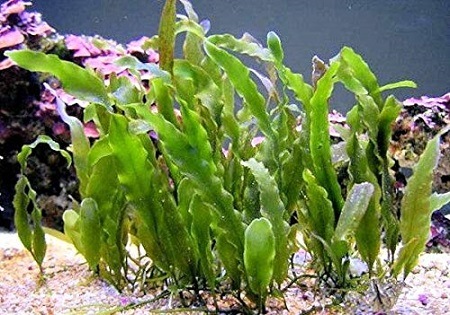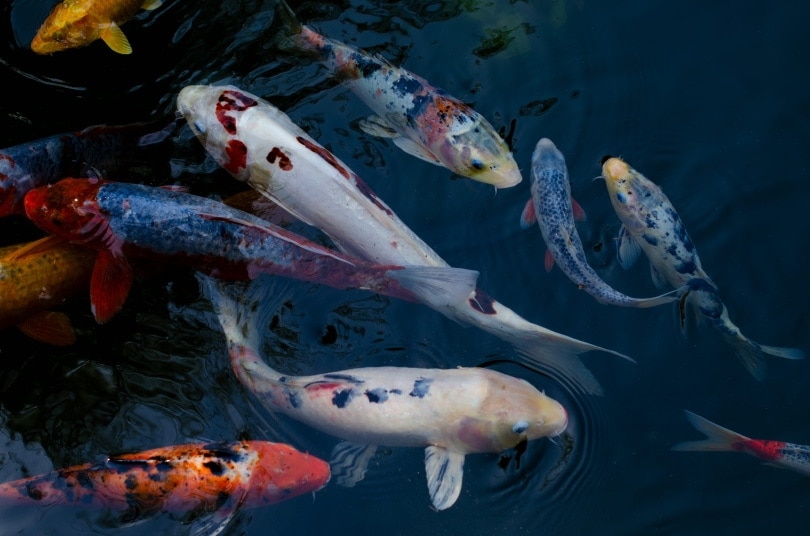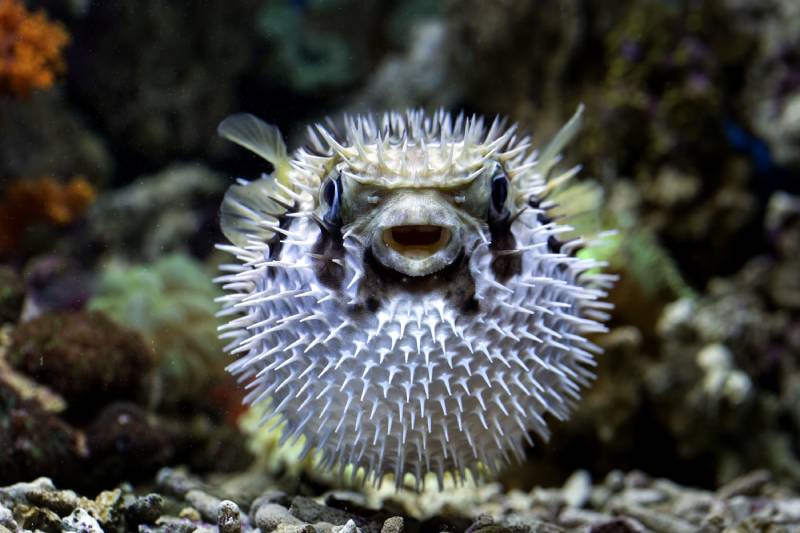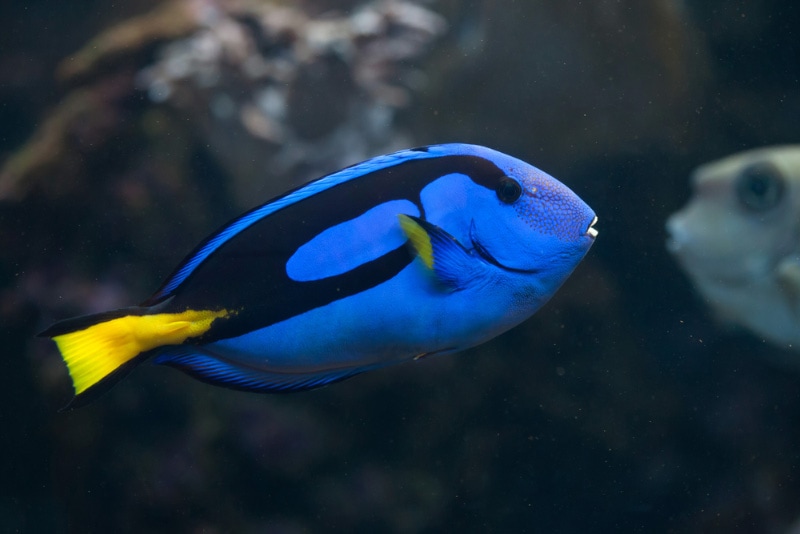10 Best Saltwater Aquarium Plants in 2024 – Reviews & Top Picks

Updated on
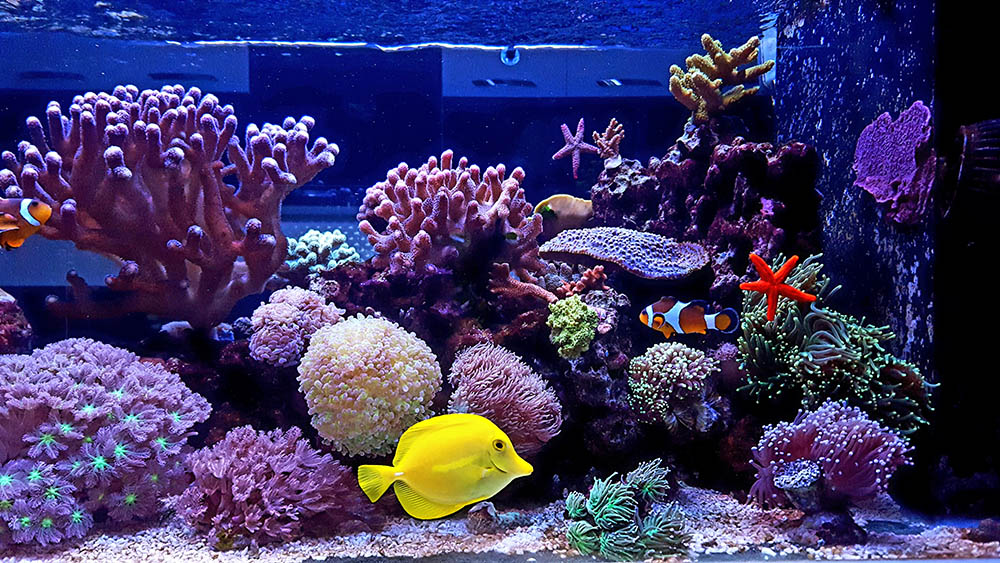
Saltwater aquariums can be more difficult to keep balanced than freshwater ones, but the good news is that there are plenty of easy-to-grow plants that you can add to your saltwater aquarium. These plants can help keep your water quality high by removing excess nitrates and phosphates through a process called nutrient sequestration.
Also known as macroalgae, these saltwater plants can also help add color and height to your tank. They’re far easier to care for than coral and can also act as a highly nutritious supplemental food source for your fish.
We’ve rounded up 10 of our favorite saltwater aquarium plants to give you some ideas. From the easy to the unusual, there’s something for every type of tank! Our reviews of each one also include information on their requirements, so you can quickly work out which one will suit your tank best.
A Quick Comparison of Our Favorites of 2024
| Rating | Image | Product | Details | |
|---|---|---|---|---|
| Best Overall |

|
Caulerpa prolifera |
|
Check Price |
| Best Value |

|
Red Mangrove |
|
Check Price |

|
Dragon’s Tongue |
|
Check Price | |

|
Sea Lettuce |
|
Check Price | |

|
Red Ogo |
|
Check Price |
The 10 Best Saltwater Aquarium Plants Are:
1. Caulerpa prolifera
- Growth rate: Fast
- Max height: 6 inches
- Light demands: Moderate
- CO2: Medium
- Difficulty: Easy
Caulerpa prolifera is a warm water species and is easy to grow under most conditions. This means it’s an excellent choice as a starter plant and is incredibly popular with saltwater aquarists. This plant absorbs nutrients such as nitrates and phosphates from the water of your tank. Using this type of algae can help reduce or completely eliminate the need for water changes.
While this type of algae can be grown under a wide range of conditions, it will do best if kept in plenty of light and with low water currents. It needs a good amount of substrate to grow in and works particularly well for reef tank aquariums. Once established, it will need pruning every few weeks to keep its growth under control.
- Easy to grow
- Hardy
- Can reduce the need for water changes
- Illegal in California
- Needs regular pruning
- Can be expensive
2. Red Mangrove
- Growth rate: Slow
- Max height: 30 foot (in the wild)
- Light demands: High
- CO2: Low
- Difficulty: Easy
Red mangrove propagules are also known as red mangrove seeds. Once established in your saltwater tank, these “sticks” will sprout into mangrove plants. They can help to increase the water quality within your aquarium by filtering out waste. They can be planted in a variety of substrates, including live rock, gravel, or sand. They will even grow in no-substrate tanks.
The leaves need to stay above the water, so make sure your tank can accommodate this. In the wild, red mangroves can grow up to 30 feet high, so they need regular pruning and removal of dead leaves from your tank. They make a great habitat for shrimp, crabs, seahorses, and amphipods. These are easy to grow, but you may need to add supplemental trace elements, iron, and magnesium to promote the best growth.
- Easy to grow
- Adds height to your tank
- Can be grown on different substrates
- May need additional iron
- Needs a big tank
- Tolerates poor water quality
3. Dragon’s Tongue
- Growth rate: Slow
- Max height: 4 inches
- Light demands: Medium to high
- CO2: Medium
- Difficulty: Easy
Dragon’s tongue is an excellent choice to add a pop of vibrant color to your saltwater aquarium. You can keep this free-floating or attached to rocks. It’s usually found in tidal reef systems, so it thrives in high-quality water with strong currents. It can also be used in an aquarium to provide a tasty dietary supplement for herbivorous fish like angelfish and tangs.
As well as looking very attractive, dragon’s tongue is useful for removing ammonia, phosphates, and nitrates from your aquarium water. It can also remove heavy metals and toxins. For long-term health and optimum growth of this plant, consider adding trace elements through regular water changes, plus adding supplementary iron. While this is a slow-growing plant, you will need to trim it back every now and again to remove the sections with absorbed toxins.
- Dietary supplement for some fish
- Can remove toxins from water
- Adds color and interest
- Expensive
- Slow growing
- Prefers a fast water flow
4. Sea Lettuce
- Growth rate: Fast
- Max height: 12 inches across
- Light demands: Medium to high
- CO2: High
- Difficulty: Easy
Sea lettuce is a type of fast-growing macroalgae that’s excellent at removing the excess nutrients like phosphate and nitrate that build up in your tank. Sea lettuce is hardy, easily available, and grows fast enough to be suitable as a supplemental food source for herbivorous and omnivorous fish in your saltwater tank.
It can also provide cover for both invertebrates and fish in your tank. Many saltwater aquarists choose to grow sea lettuce in a refugium tank, to then be added into their main tank as and when needed. Sea lettuce grows best with a relatively high current thanks to the fact that, in nature, it’s found in the intertidal zone and can cope with extreme conditions well.
- Cheap
- Easy to grow
- Keeps your tank clean
- May get eaten fast
- Needs intense light
- Needs a high current
5. Red Ogo
- Growth rate: Fast
- Max height: 10 inches
- Light demands: Low
- CO2: Medium
- Difficulty: Easy
The vibrant red color of this macroalgae, combined with its delicate branching fronds, make it a great addition to any saltwater tank that needs a bright color injection. It also helps to balance the nutrient levels of your tank by removing excess phosphates and nitrates. As an added bonus, it can be used as a supplemental food, and is especially loved by tangs.
Adding red ogo to your fish’s diet can help to improve the vibrancy of their color, improve their health, and increase their energy levels. If you have a large amount of fish, it’s recommended to grow this in a separate refugium tank and add it to your fish tank as and when necessary.
- Bright colors
- Easy to grow
- Improves fish health
- Can need supplements
- Gets eaten quickly
- Needs tethering in main tank
6. Blue Hypnea
- Growth rate: Medium
- Max height: Unknown
- Light demands: High
- CO2: Medium
- Difficulty: Medium
This stunning macroalgae has a vibrant and iridescent blue coloration, even though it actually belongs to the red algae family! When dried, you can see it has a red-brown color. This type of macroalgae is most often used as an ornamental plant in saltwater aquariums. It’s slow-growing compared to most other saltwater plants, and fish don’t tend to eat it. Small fish will love to hide in its branches, though!
As with other plants, it does an efficient job of filtering out nitrates and phosphates, helping to keep your tank water in great condition. It does best when rooted in a coarse substrate and needs high spectrum light in order to develop the most vibrant colors. It prefers low water currents and shouldn’t need supplements.
- Eye-catching color
- Fish don’t tend to eat it
- Helps maintain water quality
- Expensive
- Difficult to grow
- Needs strong light
7. Halimeda or Money Plant
- Growth rate: Fast
- Max height: 10 inches
- Light demands: High
- CO2: Medium
- Difficulty: Medium
This halimeda species is also sometimes called the money plant or cactus algae, thanks to its distinctive oval-shaped leaves. They’re a type of calcified seawater plant and use calcium carbonate, also known as limestone, to help build and maintain their structure. Given the right conditions, this fast-growing species can double in size within as little as four weeks.
Unlike a lot of other macroalgae, money plants thrive best in water that’s low in nitrates. They can suit a reef aquarium well, as their requirements closely match those of most corals. If you keep this with stony coral, it’s advised to add calcium to your water. Most fish tend to leave this plant well alone, as it gives off an unpleasant taste when eaten.
- Suited to reef aquariums
- Fish don’t eat it
- Attractive shape
- Needs low nitrates
- Can be hard to keep
- Needs high light levels
8. Mermaid’s Fan

- Growth rate: Slow
- Max height: 12 inches
- Light demands: High
- CO2: Medium
- Difficulty: High
Mermaid’s fan is an eye-catching calcareous algae that grows to form an attractive and ornamental fan shape. It needs high calcium levels due to the fact it uses calcium carbonate to reinforce its structure. Fish tend to leave this plant alone, so if you’re looking for an ornamental species that won’t get eaten, it can be a good choice.
Once set in a deep and sandy substrate, this plant will eventually send out lateral runners, forming new plants. But bear in mind, as a slow-growth plant, this can take a long time. Mermaid’s fan is sensitive to nitrate levels, and if kept with a lot of other types of algae in these conditions, they may eventually outcompete the fan, which will eventually lead it to become shaded, at which point it may die.
- Ornamental shape
- Fish won’t eat them
- Sensitive to nitrate and phosphate levels
- Can get outcompeted
- Difficult to grow
- Needs a lot of light
9. Shaving Brush Plant
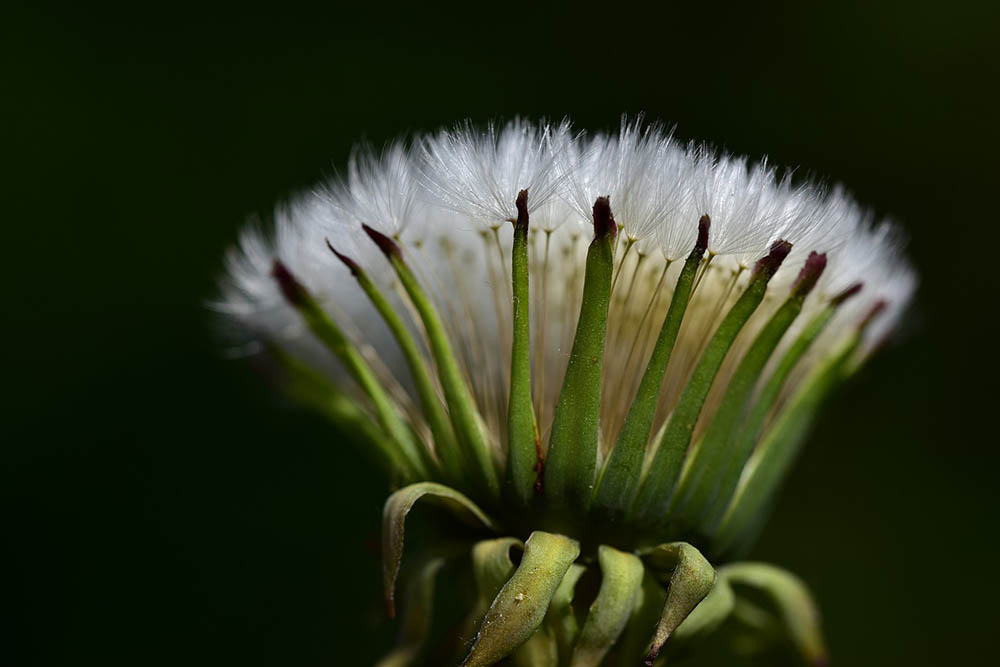
- Growth rate: High
- Max height: Around 12 inches
- Light demands: High
- CO2: High
- Difficulty: Easy
This attractive-looking plant can grow into many different shapes, but the most common is a long stalk with a round and bushy top that resembles a shaving brush. When kept under strong light, they’re excellent at removing excess phosphates and nitrates, helping to keep your saltwater aquarium water as clean as possible.
As a species that utilizes calcium carbonate to help reinforce its structure, the Shaving Brush Plant is unpalatable to most fish species. Sea urchins may happily eat it, though! They grow best in shallow waters, with a moderate current and a sandy substrate. They may need supplementary iron and calcium to grow at their best rate.
- Attractive shape
- Adds height to a tank
- Doesn’t tend to get eaten
- Can need iron supplementation
- May need additional calcium
- Need strong light
10. Sea Grapes
- Growth rate: High
- Max height: 12 inches
- Light demands: Medium to high
- CO2: Medium
- Difficulty: Easy
Called sea grapes, grape algae, and grape caulerpa, this attractive member of the Caulerpa family has branches that form small spheres, which can look like grapes! This plant is extremely efficient at removing nitrates and phosphates from your tank, helping keep it as clean as possible. It’s also palatable to a lot of fish species.
Sea grapes need a medium to high level of light 24 hours a day to prevent them from reaching sexual maturity, at which point they will disintegrate. Under constant light, this plant is extremely fast growing and tends to work best in a tank that contains fish that will eat it, and therefore keep it under control!
- Very easy to grow
- Supplementary food for fish
- Attractive shape
- Needs light 24 hours a day
- May need frequent pruning
- Will disintegrate if no light
Buyer’s Guide
Saltwater aquarium plants are also referred to as macroalgae and make a great addition to any saltwater aquarium. Whether you’re looking for a brightly colored plant to make a statement and add interest to your tank or a fast-growing plant to supplement your fish’s normal diet, you can be sure there’s a saltwater plant to match your needs.
What Are Macroalgae?
Simply put, they’re saltwater plants! They’re multicellular algal species, which can be split into three main groups: red algae (Rhodophyta), brown algae (Phaeophyta), and green algae (Chlorophyta). They can all help to create a balanced and beautiful ecosystem within your saltwater tank.
Let’s take a look at the benefits of adding plants to your aquarium, as well as how to choose the best plant for your individual tank.
- Can be used as a supplementary feed. Herbivorous and omnivorous fish will love the chance to eat macroalgae. Sea lettuce and ogo are particularly good for adding nutrition to your fish’s regular food.
- Helps to maintain water quality. Saltwater plants need nitrates and phosphates in order to grow, and these are exactly what your fish excrete! So as your fish poop into your tank’s water, the plants extract these nutrients and use them to grow bigger and stronger. If you find the right combination of plants and fish, you can even get your tank’s water balance to the point where you can reduce or completely stop water changes.
- They encourage microscopic fauna. Tiny animals known as copepods and amphipods make their homes in macroalgae, and these can make a great addition to the diets of seahorses and reef fish.
How to Choose the Best Saltwater Plants for Your Tank
Consider What Sort of Fish You Have
If you want a plant to add some vertical interest and color to your tank, you’ll be disappointed if your fish eat every scrap of it within weeks. Equally, if you’re buying a plant with the intention of adding some variety to your fish’s diet, make sure it’s one they find palatable and that it’s fast-growing enough to cope with regular nibbles.
Choose Quarantined Plants
Before buying your saltwater plants, make sure your supplier uses a quarantine system. These plants will be grown in tanks that aren’t connected to fish tanks. This reduces the chance of them carrying any bacteria or parasites, which could harm your fish.
Consider Growth Parameters
There’s no point trying to grow a plant that needs a lot of light and a high current alongside one that needs low light and low current. Matching the types of plants you choose to the current parameters of your tank will give you the best chance of success.
Consider Chemical Balances
Many saltwater plants can help maintain the chemical balance of your aquarium by removing phosphates and nitrates from the water, but some may need supplementary chemical additions like iron or calcium to make sure they can do so.
Caring for Your Plants
Once you’ve bought your new plants, it’s important to maintain your tank to keep them and your fish healthy.
- Water changes. The addition of plants into your tank may mean you can reduce water changes to a minimum. Unless all other parameters are perfect, consider changing 25% of the water every 2 weeks.
- Water chemistry. Some aquarists like to check the chemistry of their tank water every day to make sure all levels are within an acceptable range – or they quickly do something about them if they’re not. At a minimum, you should check the water chemistry once a week.
- Filter changes. Change your filter once a month if necessary. Sometimes a loose piece of plant matter like sea lettuce can become lodged in your filter.
- Daily inspection. Check that all fish and plants look healthy. Remove any plant debris that may have settled on the top of the tank. Prune plants if needed, or add in extra edible vegetation as required.

Conclusion
There are so many different saltwater plants to add to your aquarium that it can be difficult to choose! Some add height or an attractive shape, and others can be used as an easy-to-grow supplementary foodstuff for some of your fish. Others have amazing vibrant colors, including red and even blue.
Saltwater plants are an essential part of your aquarium. From helping to keep your water sparkling clean to improving the aesthetics of your tank, you’ll always be able to find a plant to fit what you’re looking for. And our reviews are designed to help make it easier for you to choose which macroalgae you’re going to add next!
Featured Image Credit: Vojce, Shutterstock



